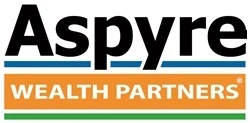By Stewart Koesten
Fifteen years ago, the Enron Corporation filed for Chapter 11 bankruptcy, bringing to light one of the largest corporate scandals in US history.
Formed in 1985, Houston-based Enron was “an energy-trading company” that resulted from the merger of two gas companies, Houston Natural Gas and Internorth. In a very short time, Enron rose as high as number seven on Fortune magazine’s list of the top 500 US companies, employed approximately 20,000 people and posted revenue of $111 billion.
By all accounts, Enron was a darling of Wall Street, world leaders, legislators, as well as the press. For example:
- It is estimated that Enron spent nearly $500,000 on political donations.
- In the days immediately preceding the collapse, Alan Greenspan received what was then considered to be the prestigious “Enron Prize.”
- In 1999, Enron’s Chief Finance Officer, Andrew Fastow, received the award as the most creative CFO of the year from CFO Magazine.
- By the year 2000, Enron had received – for six consecutive years – the award as the most innovative company from Fortune magazine’s annual ranking of the most admired companies.
The Enron story ends sadly with the staggering collapse of one of America’s largest corporations, affecting thousands of employees, wiping out billions of Enron employee’s retirement and shaking Wall Street to its core (for at least a little while).
It was just a short time later, unfortunately, that Enron’s position as the largest bankruptcy in US history ended, as the following year we witnessed WorldCom and a few years later we saw the bankruptcies of Washington Mutual and Lehman Brothers occur within 11 days of each other in 2008. And to this day, the filing of Chapter 11 by Lehman remains as the largest bankruptcy filing in US history.
What Enron Lessons Do Investors Need To Remember?
- If it seems too good to be true, it probably is.
- Never be embarrassed to ask your financial planner questions.
- Ask for and read prospectuses, annual reports and quarterly fact sheets.
- Always ask your financial planner whether a recommended investment or proposed investment strategy is consistent with your objectives and risk tolerance.
- Never chase performance. In 2000, Enron returned 87 percent, compared to a decline of 10 percent in the S&P 500.
- Be careful you don’t have too much invested in a single stock.
- Buy what you know. Generally this is preached when it comes to buying individual stocks, but the same should apply to mutual funds as well.
- Buy what you understand. You should be able to explain your investment so that a 7th grader can understand. Don’t know what a collateralized debt obligation fund or a mid-stream pipeline fund or an asset-backed security fund really is? Then don’t invest.
It is likely, however sad this statement is, that we will see another Enron. However, if you take a common-sense approach to investing and work alongside an experienced financial planner, you should be able to avoid making an Enron-type investing mistake in the future.
If you have specific questions or if I can help in any way, schedule a meeting by clicking below, contact Stewart Koesten –skoesten@makinglifecount.com, or call (913) 345-1881.
Sources: USA TODAY, CNN, Investopedia, equities.com, CNN Money
